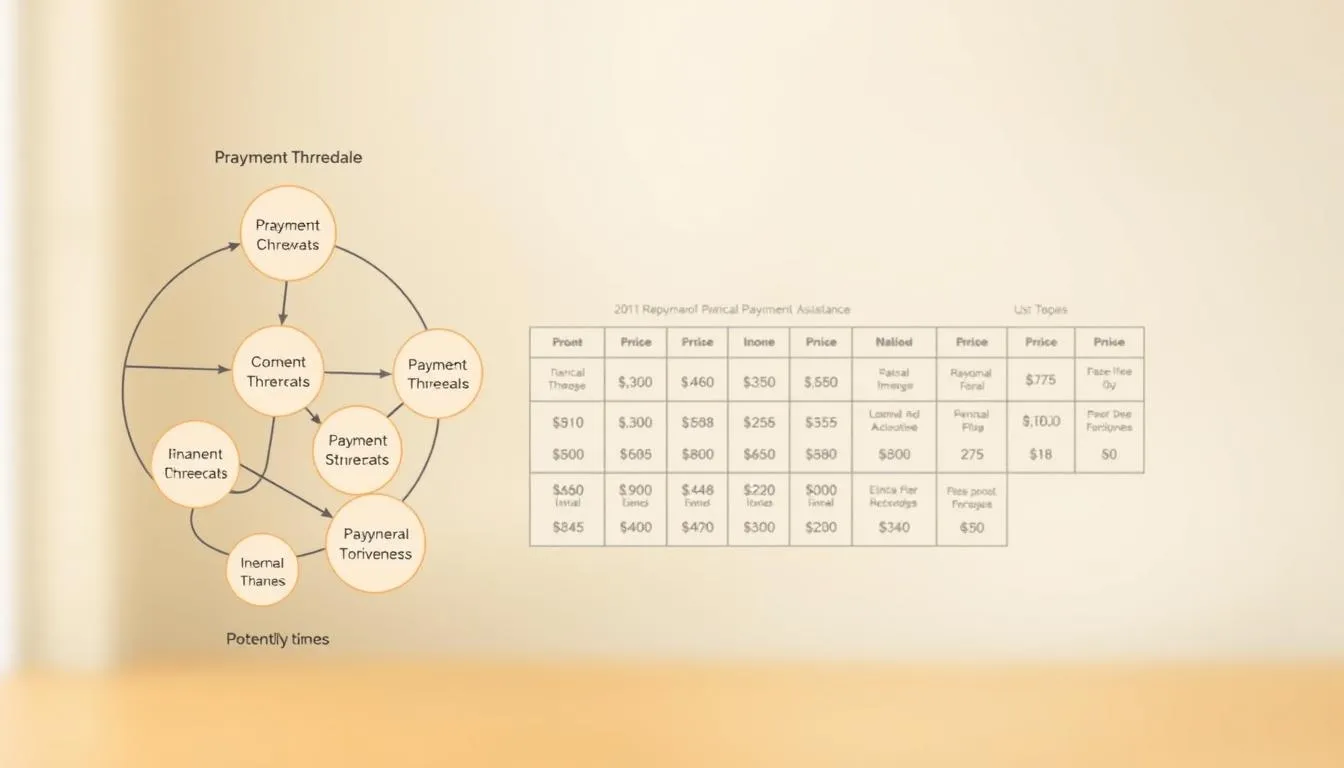Surprising fact: More than 60% of federal borrowers will see major rules shift in the next three years under the Big Bill.
The federal Big Bill creates a new Repayment Assistance Plan (RAP) starting July 1, 2026, and phases out the SAVE, PAYE, and ICR plans by July 1, 2028. That means many people must rethink how they pay each month.
If you are on the SAVE plan today, expect higher payments when the phaseout happens. The law also changes who can use Grad PLUS and narrows Parent PLUS access unless steps are taken before July 1, 2026.
The Department of Education urges borrowers to keep contact information current and to use the Student Loan Simulator to model future payments. The Big Bill also tightens deferment and forbearance rules for loans disbursed after July 1, 2027 and allows defaulted borrowers to rehabilitate twice starting July 1, 2027.
We’ll walk through timelines, who is first affected, and practical next steps so you can plan with confidence in this evolving system under President Donald Trump policy direction.
Key Takeaways
- New RAP starts July 1, 2026 and will change payment rules.
- SAVE, PAYE, and ICR end by July 1, 2028; SAVE enrollees may pay more.
- Grad PLUS and Parent PLUS rules tighten for new program starts after mid‑2026.
- The Department Education recommends updating contacts and using the Simulator now.
- Timelines matter: key dates roll out between 2026 and 2028, so act early.
Future Student loan repayment changes at a glance: timelines, who’s affected, and what’s ending
Major dates between 2026 and 2028 will reshape options for many borrowers. Start planning now so budget surprises are less likely.

Key dates: July 2026–2028 rollouts and limits
On July 1, 2026 the Repayment Assistance Plan (RAP) becomes available. New borrowers and those who consolidate on or after that date may be limited to standard or RAP. Grad PLUS for new programs also ends that same date.
Deferment, forbearance, and default relief
Starting July 1, 2027, unemployment and economic hardship deferments end for loans first disbursed after that month. Forbearance is capped at nine months in any 24‑month span.
Defaulted accounts can use rehabilitation twice beginning that year. The Department Education urges use of the Student Loan Simulator to estimate future payments. For more details, see the repayment updates.
Who keeps access and what ends by 2028
By July 1, 2028, SAVE, PAYE, and ICR are set to be eliminated. Many existing repayment plans will move to IBR or RAP by default if a borrower does nothing.
| Effective Date | What Starts | What Ends | Impact on borrowers |
|---|---|---|---|
| Jul 1, 2026 | RAP available | Grad PLUS for new programs | New borrowers limited to standard or RAP |
| Jul 1, 2027 | Rehab allowed twice | Hardship/unemployment deferments (new loans) | Forbearance capped 9 months per 24 months |
| By Jul 1, 2028 | IBR and RAP remain | SAVE, PAYE, ICR | SAVE enrollees may face higher monthly payments |
Repayment plans reimagined: RAP vs. Income-Based Repayment and the new standard repayment plan
Beginning in mid‑2026, many borrowers will face a clearer choice between a new assistance pathway and updated income-based options. Understanding each plan helps you pick the best route for monthly costs and long-term forgiveness.

The Repayment Assistance Plan (RAP)
RAP sets a floor: $10 minimum payments and ties the payment to a share of AGI minus $50 per dependent. Unpaid interest is waived and, if a payment does not cut principal, the plan can reduce principal by up to $50 to stop balances from growing.
RAP stretches forgiveness to 30 years, so it can lower monthly payments now but extend the path to loan forgiveness.
Income-Based Repayment updates
IBR continues as the core income-based repayment plan with two flavors. Old IBR (pre‑July 1, 2014) charges 15% of income above 150 federal poverty and cancels after 25 years.
New IBR (loans between 2014–2026) charges 10% above that same 150% threshold with a 20‑year cancellation, and $0 payments still apply for incomes below 150% FPL.
Standard plan and Public Service impacts
The updated standard repayment plan for loans issued on/after July 1, 2026 ties term length to how much you borrowed. Only the classic 10‑year standard counts toward public service loan forgiveness, so borrowers with high balances often need RAP or IBR to make qualifying monthly payments for service loan forgiveness.
Auto-moves when plans end
If SAVE, PAYE, or ICR disappear, Direct loans for a borrower’s own education will auto-move to RAP. FFEL or Direct consolidations that paid off Parent PLUS will default into IBR unless the borrower chooses otherwise. Confirm your plan and update income annually to avoid surprises.
Parent PLUS and graduate borrowing: narrowed repayment options and borrowing caps
For Parent PLUS borrowers, timing will determine whether income-based paths remain available. Only those who consolidate before July 1, 2026 and enroll in any IDR by July 1, 2028 keep eligibility for IBR later. Note: this group will not be eligible for RAP.

What parents should know
If you consolidate or start a new account after July 1, 2026, you’re limited to the new standard plan. After July 1, 2027 many hardship and unemployment deferments end for new accounts, and forbearance is capped.
Grad programs and borrowing caps
Grad PLUS ends for programs that begin on or after July 1, 2026. New borrowing caps will limit how much grad students can borrow through federal student loan options. That could push schools to rethink pricing or aid.
- Action tip: consider consolidating now and enrolling in ICR to preserve IBR eligibility.
- Confirm servicer records and keep documentation of every submission and enrollment.
How to prepare now: practical steps to navigate repayment options, applications, and risks
Early action lets you compare pathways and lock in options before key deadlines affect eligibility. Start by modeling repayment options with the Department of Education’s Student Loan Simulator to compare income-based repayment, IBR, standard, and RAP scenarios.
Action checklist: log into your servicer account and StudentAid.gov. Verify email, address, and phone so you get notices. Apply early for an income-based repayment plan; the department education has a backlog of about 1.5 million IDR applications, so delays are common.
Keep careful records. Download payment histories, save confirmation emails, and screenshot form submissions. Processing forbearance (up to 60 days) may count toward service loan forgiveness, but interest already resuming under the save plan in August can affect balances.
Documentation and support
Use the Student Borrower Protection Center and state ombudsmen for help. If you must make payments during a transition, prioritize avoiding delinquency and track how interest accrues.
Mitigating risk
Align PSLF employment certification with the plan that preserves qualifying payments. Re-certify income yearly and set calendar reminders around key years in the rollout.
| Action | Why it matters | When | Impact |
|---|---|---|---|
| Use Simulator | Compare options and estimate payments | Now | Better budgeting for monthly payments |
| Verify contacts | Prevent missed notices from servicer or DOE | Immediately | Avoid enrollment or processing lapses |
| Apply early for IBR | Queue ahead of backlog | Before key deadlines | May earn processing forbearance time |
| Document everything | Proof if system errors occur | Ongoing | Protect forgiveness and appeal rights |
Conclusion
With deadlines set through 2028, understanding IBR and RAP matters for every active account.
Plan ahead: the Big Bill leaves IBR and the repayment assistance plan as primary options, reshapes the standard repayment plan after July 1, 2026, and limits flexibility for loans issued after July 1, 2027.
Act now if Parent PLUS access or grad program borrowing affects you. Verify servicer info, model multiple repayment plan scenarios, and keep records each month.
Need a quick refresher or data to model options? See a concise repayment terms update and use official tools to stay on track.
FAQ
What are the key timelines for upcoming federal changes between 2026 and 2028?
Major rollouts begin in July 2026 and continue through 2028. These phases include limits on deferment and forbearance use, changes to default rehabilitation rules, and staged transitions for existing plans. If you have federal student debt or consolidate before a deadline, your options and timeline may differ. Check official Department of Education updates and your servicer notices so you don’t miss enrollment windows or automatic transfers.
How will borrowers be treated differently based on when they took out or consolidated their loans?
Borrowers who took out or consolidated funds before new effective dates often keep older plan terms for a time, while new borrowers face updated eligibility, caps, and formulas. Consolidation can change which program rules apply, so weigh the benefits and deadlines. Contact your servicer and use the federal Student Loan Simulator to preview scenarios based on your loan dates and actions.
What is the SAVE plan and what’s happening to PAYE and ICR?
The SAVE plan offered income-driven terms; PAYE and ICR are set to be phased out or altered during the transition. Some borrowers may be moved into new programs or given opt-in options. Watch Department of Education announcements and servicer communications to learn whether your account will shift automatically or requires action from you.
What is the Repayment Assistance Plan (RAP) and who qualifies?
RAP sets a minimum monthly payment of $10 and calculates payments from adjusted gross income (AGI). It can include interest waivers and offers forgiveness after 30 years of qualifying payments. Eligibility rules and application steps vary, so confirm details with your servicer and prepare income documentation when applying.
How did Income-Based Repayment (IBR) change under the new rules?
IBR now broadens access by removing the strict partial financial hardship test for some borrowers and adds protections tied to 150% of the federal poverty level. That means more people may qualify for lower monthly amounts. Exact payment formulas and eligibility depend on family size, AGI, and loan type — check the updated guidance or run numbers through the Student Loan Simulator.
Will the standard plan and Public Service Loan Forgiveness (PSLF) be affected?
The new standard schedule adjusts monthly amounts and can change how payments count toward PSLF. Some borrowers may see higher scheduled payments, and qualifying timelines for PSLF could shift. If you work in public service, track employer certification and plan rules so payments continue to count.
If my plan is eliminated, what happens to my account?
When SAVE, PAYE, or ICR are phased out, eligible borrowers may be auto-enrolled into RAP or IBR, or given a choice to switch. Automatic moves depend on your loan type and enrollment status. Review servicer notices and get help if an automatic change would raise your monthly amount unexpectedly.
How are Parent PLUS borrowers affected?
Parent PLUS borrowers will face narrowed options and new enrollment rules. Consolidation may be required to access certain IDR plans like IBR, and some programs such as RAP may no longer be available to Parent PLUS loans. Parents should check consolidation windows and consider timing to preserve benefits.
What’s changing for graduate and Grad PLUS borrowing?
Grad PLUS borrowing is being restricted, with new borrowing caps and program changes that could affect program pricing and repayment choice. Prospective and current grad students should review updated loan limits and consider cost alternatives like scholarships, assistantships, or federal work-study.
What immediate steps should I take to prepare for these shifts?
Use the federal Student Loan Simulator to compare options, confirm your current servicer and contact info, and update income documentation. Create a budget that anticipates potential higher monthly payments and consider consolidation timing carefully. If you work toward PSLF, keep employer certifications current.
What records and documentation should I keep?
Keep pay stubs, tax returns, enrollment statuses, servicer correspondence, and any employer certification forms. These help when applying for income-based plans, verifying qualifying payments for forgiveness, or resolving processing delays. Store files digitally and keep backups.
How can I reduce the risk of delinquency or default during transitions?
Communicate early with your servicer, enroll in an income-driven program if eligible, and request forbearance only as a last resort because limits will tighten. Build an emergency fund if possible and consider temporary repayment strategies to avoid missed payments that harm credit and forgiveness progress.
How do I maximize Public Service Loan Forgiveness benefits under the new rules?
Track qualifying employment and submit employer certifications annually. Choose repayment plans that count toward forgiveness and avoid consolidating away creditable payments without understanding consequences. Get help from trusted non-profit counselors or your servicer to confirm that payments apply to PSLF.
Where can I get trustworthy help or more information?
Rely on the U.S. Department of Education website, your assigned loan servicer, and established nonprofit credit counseling groups. Beware of scams and paid services that guarantee forgiveness. Official sources provide free tools, guidance, and the Student Loan Simulator to estimate outcomes.
